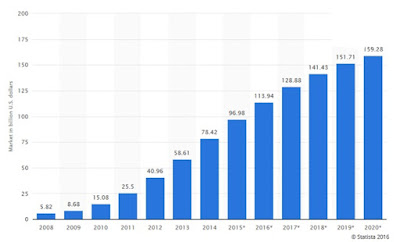Twitter Feed
“Cash for Clunkers” Should Have Used the Cloud!
Rich Bruklis wrote an excellent essy on how the government missed a perfect opportunity to use cloud computing. In “Cloud Opportunity Missed” he writes: “It appears that the voucher system…
US Navy Experiments With Secure Cloud Computing
This week in San Diego, CA the US Navy held the initial planning conference for Trident Warrior ’10. The Trident Warrior series is the premier annual FORCEnet Sea Trial Event…
GSA To Present On Cloud Initiative at NCOIC Plenary
A General Services Administration (GSA) representative is now scheduled to provide a briefing on the agency’s cloud computing initiative during a “Best Practices for Cloud Initiatives using Storefronts” session on…
FAA CIO Focuses on Cybersecurity
During this week Federal Executive Forum, FAA CIO Dave Bowen mentioned protection against software vulnerabilities, wireless intrusion and website vulnerabilities as his top cybersecurity priorities. As the Assistant Administrator for…
DHS Asst. Secretary Addresses Cybersecurity Priorities
Greg Schaffer, Assistant Secretary for CyberSecurity & Communications for the US Department of Homeland Security, sees Trusted Internet Connections, EINSTEIN, and front line defense of the nation’s networks as top…
US DoD Chief Security Officer on Cybersecurity Priorities
In a Federal Executive Forum interview, Robert Lentz, Chief Security Officer for the US Department of Defense, highlighted the departments cybersecurity priorities. Mr. Lentz is the Deputy Assistant Secretary of…
Twitter Under Denial of Service Attack
Multiple sources are reporting that Twitter continues to be under a denial of service attack. Some are speculating that this represents the power of a coordinated bot network attack. For…
NCOIC Holding Full Day Cloud Computing Session
The Network Centric Operations Industry Consortium (NCOIC) will be holding a one-day cloud computing session during its plenary meetings, 21-25 September at the Fair Lakes Hyatt in Fairfax, VA. A…
Sevatec a New Player in the Federal Cloud Computing Market
Just in time for the new Federal Cloud Computing Storefront, Sevatec, Inc. is announcing the development of a toolkit to help federal agencies transform their enterprise architectures to cloud computing…
GSA Releases Cloud Computing RFQ
Following through on a much anticipated action, GSA released their Cloud Computing Request For Quotation (RFQ) today. Cloud computing is a major part of President Obama’s reform effort and this…
- Enable cloud service arbitrage based on cost, performance or operational need;
- Help companies migrate operations to the cloud and assist with staff augmentation and training;
- Provide cloud service auditing and SLA monitoring services;
- Help in focusing and managing organizational cloud service demand;
- Provided toolsets to assist in the migration and integration of enterprise applications; and
- Help in change management and the selection and integration of other managed services.
By automating and operationalizing the governance of cloud services, CSBs can efficiently multi-source services and augment them with third party metering and monitoring. Using CSBs, organizations also accelerate their transition to hybrid IT models. This marketplace is typically segmented type of services: cloud brokerage and cloud brokerage enablement, wherein cloud brokerage enablement is further segmented into internal and external brokers. When used internally, cloud enablement platforms helps enterprises adopt the new hybrid IT and multi-sourced operating model. By building organic expertise, companies can personalize IT service consumption and unify
IT service delivery through the use of a corporate self-service store, a dynamic service marketplace, and continuous delivery. This centralized, supply chain approach unifies the order, execution, and management of multi-sourced solutions across legacy and cloud resources, by centrally delegating and tracking execution.
(This post was brought to you by IBM Global Technology Services. For more content like this, visit Point B and Beyond.)
( Thank you. If you enjoyed this article, get free updates by email or RSS – © Copyright Kevin L. Jackson 2016)
Cloud Computing
- CPUcoin Expands CPU/GPU Power Sharing with Cudo Ventures Enterprise Network Partnership
- CPUcoin Expands CPU/GPU Power Sharing with Cudo Ventures Enterprise Network Partnership
- Route1 Announces Q2 2019 Financial Results
- CPUcoin Expands CPU/GPU Power Sharing with Cudo Ventures Enterprise Network Partnership
- ChannelAdvisor to Present at the D.A. Davidson 18th Annual Technology Conference
Cybersecurity
- Route1 Announces Q2 2019 Financial Results
- FIRST US BANCSHARES, INC. DECLARES CASH DIVIDEND
- Business Continuity Management Planning Solution Market is Expected to Grow ~ US$ 1.6 Bn by the end of 2029 - PMR
- Atos delivers Quantum-Learning-as-a-Service to Xofia to enable artificial intelligence solutions
- New Ares IoT Botnet discovered on Android OS based Set-Top Boxes



